

How To Describe Night In Writing (100 Best Words + Examples)
As a writer, I know all too well the challenges that come with describing the essence of the night.
That’s why I’ve put together this guide to help you master the art of writing about the night.
Here is how to describe night in writing:
Describe night in writing by using vivid sensory details, metaphors, and character reactions to evoke the atmosphere, emotions, and complexities of the nocturnal world. Shift night imagery for unforgettable storytelling in different genres.
Keep reading to learn over 100 words and examples of how to describe night in writing.
Understanding the Intricacies of Nighttime Descriptions

Table of Contents
When it comes to understanding nighttime descriptions, it’s essential to recognize the intricacies of night.
And to develop a keen eye for the subtle details that set it apart from the day.
As daylight gradually fades, elements like the absence of light, the emergence of shadows, and the contrast between sounds and silence become crucial for painting a vivid picture of the night.
Night has the unique ability to transform any setting into a canvas for significant character actions or revelations. It lends itself to engaging the senses and conjuring emotions that resonate with the human experience. To effectively capture the essence of night, a writer must skilfully navigate the intricacies of this complex landscape.
Different writing techniques for night scenes can bring to life the rich tapestry of the nocturnal world, fostering a connection with readers and inviting them to immerse themselves in the story.
Here are a few pointers to keep in mind:
- Observe how objects and characters cast shadows under the moonlight, creating a play of light and darkness that can heighten the drama and atmosphere of a scene.
- Consider the unique sounds of the night, such as the hoot of an owl, the rustle of leaves, or the whisper of the wind as it weaves through branches.
- Pay attention to the interplay between the senses and the emotions of the night, with silence often evoking a profound sense of awe, mystery, or solitude.
Mastering the art of nighttime descriptions requires both an eye for detail and an understanding of its inherent metaphorical value.
By seamlessly weaving the literal and the metaphorical, a writer can craft a gripping night scene that transports readers into the heartbeat of the story’s world.
The Role of Atmosphere in Crafting Night Scenes
The atmosphere is pivotal in night scene descriptions, guiding the reader’s emotions and setting the narrative tone.
Vivid sensory experiences help in concocting an immersive atmosphere that is as tangible to the reader as the darkness itself.
In this section, we will explore the importance of sensory details and emotions in nighttime narratives, and how they intertwine with our inner thoughts, making night scenes richer and more engaging.
Setting the Tone with Sensory Details
Sensory details can capture the essence of a night scene, evoking the night’s quiet majesty.
They provide a backdrop for reflective moments and draw the reader into the story using the five senses. Consider some sensory details that you can use to bring your night scene to life:
- Visual: The moon casting a soft, silver glow on a quiet street.
- Auditory: The distant hoot of an owl or the haunting whisper of the wind.
- Olfactory: The crisp, cool air carrying the faint scent of fresh blossoms.
- Touch: The dampness of dew-covered grass beneath the character’s feet.
- Taste: The character savoring a warm drink on a chilly night.
By including these sensory details, you can set the tone of your night scenes and create a vivid, atmospheric setting that envelops the reader.
Emotions and the Night: Reflecting Inner Thoughts
The interplay of emotions and nighttime is a powerful narrative device.
Night can mirror a character’s inner thoughts and serve as a metaphor for the turmoil, tranquility, or mystery they experience.
It is a period of contemplation, amplifying the character’s emotional state, whether it’s the euphoria of falling stars or the agitation of shadows that resemble past fears.
To harness the emotional power of night, consider these tips:
- Align sensory impressions with the character’s psychological state. For example, the sharp coldness of the night could reflect their inner turmoil.
- Contrast the night’s serenity with the character’s emotional upheaval, heightening the impact of their internal struggles.
- Utilize the darkness as a catalyst for introspection, prompting the character to dig deeper into their thoughts and feelings.
Ultimately, by aligning sensory impressions with psychological states, night scenes become a medium to delve deeper into the corners of the character’s psyche.
Combine sensory details and emotions to create atmospheric night settings that resonate with readers.
Utilizing a Rich Vocabulary to Portray Night
Effectively portraying a night in writing relies heavily on a rich vocabulary.
The proper selection of descriptive words not only evokes different shades of night but also conveys various emotions and atmospheres. Whether describing the color of the sky or the feel of nocturnal air, careful word choice can transport readers into the night scene you create.
Incorporating a range of sensory words and varying degrees of specificity can enhance your nighttime descriptions.
For example, simple but potent words like quiet set the tone, while more specific color descriptors such as crimson or azure paint a distinct picture of the night in the reader’s mind.
Below is a table showcasing different words and phrases that can be used to portray various aspects of the night:
Tapping into this diverse vocabulary allows you to craft vivid and immersive night scenes.
Each word carries unique connotations that can resonate with the reader, enhancing their connection to the narrative.
When used effectively, these descriptive words for the night can transform your writing, painting a vibrant picture of the night and drawing readers further into your story.
30 Best Words to Describe Night in Writing
When it comes to describing night scenes in writing, the choice of words plays a crucial role in painting a vivid picture.
Here are 30 of the best words to help you capture the essence of the night:
- Star-studded
30 Best Phrases to Describe Night in Writing
Crafting a captivating night scene often involves using descriptive phrases that evoke the atmosphere and emotions of the nocturnal world.
Here are 30 of the best phrases to help you master the art of describing night in writing:
- “The moon cast a soft, silver glow.”
- “Stars adorned the velvety sky.”
- “Shadows danced in the moonlight.”
- “The night was cloaked in mystery.”
- “A serene, moonlit meadow stretched before us.”
- “The darkness whispered secrets.”
- “Nocturnal creatures stirred in the silence.”
- “The night sky was a canvas of stars.”
- “Moonbeams kissed the earth.”
- “The night held its breath.”
- “Darkness enveloped everything.”
- “The stars blinked like diamonds.”
- “The moon hung low, a glowing orb.”
- “The night was alive with whispers.”
- “A blanket of stars covered the sky.”
- “The night air was cool and crisp.”
- “Shadows played tricks on the senses.”
- “The night exuded a sense of enchantment.”
- “The world was bathed in moonlight.”
- “Silence settled like a shroud.”
- “The night was a tapestry of shadows.”
- “The stars shimmered with a celestial grace.”
- “The moonlight painted everything in silver.”
- “The night was a realm of dreams.”
- “The darkness held its secrets close.”
- “The night sky was a sea of stars.”
- “The night whispered of ancient mysteries.”
- “The moon’s glow was a guiding light.”
- “Shadows clung to the edges of reality.”
- “The night was a time for reflection.”
Writing Techniques: Going Beyond the Visuals
When crafting an engaging nighttime scene, writers must venture beyond the visuals to captivate the reader fully.
Using sounds and the sense of touch is essential for developing a rich, multi-dimensional narrative.
This section delves into incorporating sounds and silence for dramatic effect and the touch and texture of darkness in writing.
Incorporating Sounds and Silence for Effect
The sounds of night can have powerful effects on the atmosphere and emotional impact of a scene.
Thundering roars, rustling leaves, or the sudden absence of sound can all contribute to the mood of a scene. These auditory cues help create a vivid, believable setting for readers to immerse themselves in.
Consider incorporating the following techniques to represent the sounds of night and the role of silence in your writing:
- Use auditory details to paint a fuller picture of the environment.
- Utilize silence as a storytelling device, heightening suspense or emphasizing a moment of reflection.
- Experiment with sound to create contrast and tension within a scene.
Silence in writing can be as impactful as the sounds themselves, emphasizing the stark difference between the quiet of the night and the sudden eruption of noise that disrupts the calm.
The Touch and Texture of Darkness
Describing touch at night is another essential aspect of crafting a compelling nighttime scene.
The tactile experience of the night is as evocative as its visual counterpart, with the cool breeze raising goosebumps, the damp fog clinging to the skin, and the unsettling sensation of unseen objects brushing against a character.
When done effectively, these tactile descriptions in writing can make the darkness feel like a comforting shroud or an ominous presence looming over the narrative.
The following list includes tips on including touch and texture in your writing:
- Describe the night’s touch as it interacts with the character’s skin, clothing, and surroundings.
- Highlight the texture of darkness , including the roughness or smoothness of surfaces, the dampness of fog, or a character’s emotional response to the touch of night.
- Consider how the sense of touch contributes to character development and advances the story’s plot.
Colorful Language: Painting the Night in Words
Descriptive language is essential in painting the night scene, employing shades like “scarlet,” “indigo,” or “emerald” to depict the sky’s canvas.
Such language transforms the scene into a vivid tableau, enabling readers to visualize the unique hues and tones the night unfolds.
Descriptive words for colors like “burgundy” or “magenta” not only portray the scene but also add emotional weight, enhancing the reader’s connection to the narrative.
Let us explore the variety of words that can be employed to describe the myriad shades and hues of the night sky:
Maximizing Impact with Metaphors and Similes
Metaphors and similes are essential tools in the arsenal of a writer, allowing them to create rich and expressive night descriptions.
These literary devices make it possible for writers to craft relatable, evocative scenes that draw powerful parallels between nighttime and universal experiences, enriching the narrative and fostering deeper connections with the reader’s own memories and emotions.
Comparing Nighttime to Universal Experiences
Similes and metaphors have the power to transform ordinary descriptions into captivating and imaginative prose.
They can liken the dark to a velvet blanket that envelops the world in its gentle embrace or compare stars to a multitude of diamonds scattered across the heavens, casting their ethereal glow upon the earth below. By relating nighttime to familiar experiences, writers can breathe life into their descriptions, making them truly memorable and vivid.
When employing metaphors and similes in your writing, consider the following examples:
- The night sky unfolded like an ebony tapestry, with the constellations embroidered in silver threads.
- Shadows danced and flickered on the walls, creating a haunting ballet of light and dark.
- The moon’s radiance carved a shimmering path across the water, mirroring the celestial bridge found in ancient myths.
Keep in mind the importance of balance when using metaphors and similes in your writing.
Overuse can lead to cluttered prose and detract from the impact of your descriptions. Use these devices sparingly and thoughtfully, ensuring they effectively enhance your narrative rather than overwhelming it.
Character Reactions and the Night: A Dynamic Tool
Exploring character reactions to the night serves as a dynamic storytelling tool in writing.
A character’s interaction with the night can range from a confrontation with their fears to a moment of serenity or revelation. Emotional responses to the night are as diverse as the characters themselves, allowing for the exploration of profound personal journeys influenced by the cloak of darkness.
These reactions can serve as a pivot for character development or as key moments that drive the plot forward.
In order to successfully incorporate character reactions to night into a story, consider the following aspects:
- Understanding the character’s background and personality, in order to establish how they might react to the night.
- Identifying how the night setting can influence each character’s inner emotions and thought processes.
- Developing a natural progression of the character’s journey, from initial reactions to ultimate revelations or actions.
- Utilizing sensory details, such as sights, sounds, and textures, to heighten the emotional response and connection of the character to their surroundings.
- Employing narrative devices, such as flashbacks or introspection, to delve deeper into the character’s past experiences and how they relate to their current situation.
Notable authors have expertly utilized character reactions to night to enrich their narratives.
For example, in F. Scott Fitzgerald’s The Great Gatsby , the nighttime setting serves as a backdrop for Gatsby’s extravagant parties, highlighting his desires and insecurities.
In contrast, the darkness of night in Charlotte Brontë’s Jane Eyre signifies Jane’s feelings of isolation and despair as she struggles to navigate societal expectations and discover her own identity.
The table below outlines various emotional responses to the night and how they can contribute to writing character dynamics:
Writing about the Darkness: Invoking Mystery and Fear
Writing about darkness has the power to reach into our core, tapping into primal emotions such as mystery and fear.
It serves as both a metaphorical and literal backdrop for danger, unknown elements, or even supernatural encounters.
By employing darkness as a narrative driver, writers can create experiences that keep readers on the edge of their seats, cementing engagement and intrigue.
Using Darkness to Drive the Narrative
When incorporating darkness into a story, there are several strategies that can drive the narrative forward.
These strategies contribute to a tense atmosphere and lie in setting up obstacles for characters, stirring tension, and laying the groundwork for suspenseful action.
The unknown aspects of the night provide a myriad of opportunities to cultivate fear and mystery in the reader’s mind.
Here is a chart that breaks down some helpful strategies:
Exploring the Twofold Nature of Night’s Tranquility and Turbulence
The twofold nature of night is a fascinating element in storytelling, offering writers countless opportunities to craft engaging narratives that capture the essence of both tranquil night scenes and turbulent night writing.
As the darkness wraps itself around the world, it reveals the duality of night.
You can use this duality to showcase how peaceful moments can intertwine with chaotic events, reflecting the complexities of human emotions and experiences.
To understand the twofold nature of night, let’s first delve into the serenity that can envelop the nocturnal landscape.
Tranquil night scenes depict nature at its most peaceful, showcasing a world untouched by human worries.
Stars glitter above, casting a calming glow upon the quiet earth below, while the gentle rustle of leaves sings a lullaby to the slumbering world. These moments of stillness can provide the most evocative settings for introspection, personal growth, or emotional connection between characters.
On the other hand, turbulent night writing employs darkness to create tension, suspense, or fear.
The howling wind and stormy skies set in stark contrast to the serenity of tranquil night scenes. These moments serve to bring out the raw, primal emotions within characters, forcing them to confront adversity, battle their fears, or come face-to-face with their deepest anxieties.
The Power of Short Sentences and Fragments in Night Imagery
Short sentences and fragments wield considerable power in night imagery.
This writing technique reinforces the themes of darkness and night by mimicking the shadows and disjointed glimpses that emerge in low light.
It creates a rhythm reflective of the night’s ebb and flow.
You can guide the reader through the narrative in abrupt, sometimes breathless, spurts that can increase tension or underscore a moment of clarity within the darkness.
Consider these examples:
- Stars blinked in and out. A hush fell. Shadows danced.
- Moonlight sliced through darkness. Cold air whispered. Teeth chattered.
- Rain lashed the window. Thunder menaced. Breath shuddered.
Each example above showcases short sentences or fragments that mimic the fleeting nature of night scenes.
By truncating the length of sentences, the writer sets a distinctive tempo —one that effectively captures the essence of night and transports the reader into the story.
Fragments in particular can serve as impactful standalone statements, leaving room for interpretation and heightening the sense of mystery. Not confined by traditional grammatical rules, they are free to support or disrupt a narrative flow, making them potent tools for night imagery.
She hesitated. Darkness clawed at her heart. Eerie silence.
In the example above, the fragment “ Eerie silence ” punctuates the sequence and provokes a sense of unease through its abruptness.
Fragments like this one become a powerful storytelling device in night imagery, condensing tension or emotion into brief, visceral moments.
Here is a good video about writing techniques you can use to describe night in writing:
Conclusion: How to Describe Night in Writing
Mastering the art of describing night opens doors to captivating storytelling.
Explore more articles on our website to further enhance your writing skills and craft immersive narratives.
Read This Next
- How to Describe a Sunset in Writing: 100 Best Words & Phrases
- 57 Best Ways to Describe Buildings in Writing (+ Examples)
- 400+ Words to Describe a Flower Garden: Best Writers Guide
- How to Describe the Wind in Writing (100 Words + Examples)
Research Gate – Research on Nighttime

How To Describe A Night In Writing Much Better

When you describe a night in writing, you are setting the scene for your story or a new chapter.
You want to show your readers the setting rather than tell them about the night using a couple of quick adjectives.
Highly descriptive or figurative language and a variety of grammar structures help you paint the picture more vividly in a reader’s mind.
In almost every story, fiction and nonfiction, there is usually at least one reference to a night.
Article Contents
How to describe a night
It was a dark and stormy night.
This opening line from Edward Bulwer-Lytton’s 1830 novel, Paul Clifford , is now almost a cliché for poor writing.
Writer’s Digest called it the literary poster child for bad story starters.
The main problem is that it uses two very weak adjectives: dark and stormy. Neither of them is highly descriptive.
Another weakness is that it starts with a grammatical expletive .
Writing about a night using it was or there was is a common writing weakness. We so often refer to a night as it, like the weather .
A better way is to think about imagery and sensory details.
For example, the gentle rustling of leaves in the night breeze or the distant glow of city lights use nouns to start the description.
You can also use metaphors or similes to add more meaning and depth to the depiction of night.
By avoiding it was, clichés, or a couple of weak adjectives, you can easily improve your descriptions of a night.
An easy formula to use
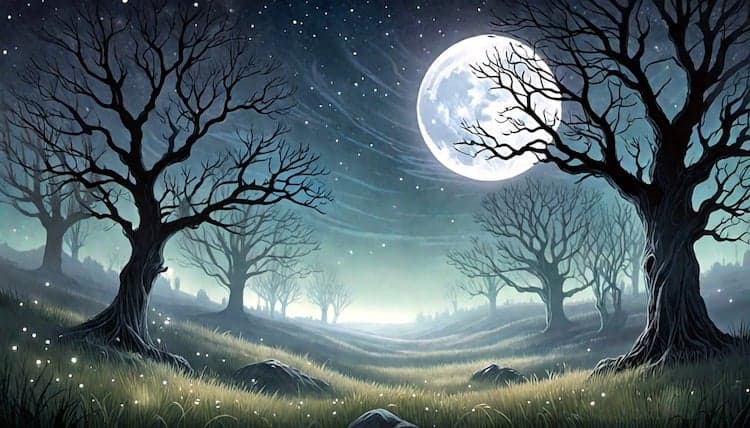
When you write about a night, here’s a little trick you can use.
Start with a noun phrase, add a strong verb, followed by a descriptive clause.
You add more detail by describing nouns and verbs with adjectives and adverbs.
Here’s a short example.
Moonbeams pierced through the canopy of the forest, illuminating patches of the forest floor with a ghostly glow as the distant hoot of an owl mingled with the soft rustle of leaves in the gentle breeze.
It’s an easy way to avoid the grammatical expletive followed by one or two weak adjectives.
You can also experiment with similes or metaphors.
For example, Moonbeams sliced through the dense canopy of the forest like silvery blades .
Or, Moonbeams were silver threads woven through the dense canopy of the forest.
As you can see, it is very easy to describe a night much better by concentrating on the noun that starts the descriptive sentence or sentences.
When you do this, a stronger verb is always much easier to find.
The three quick examples above show that the verbs following the noun moonbeams are pierced, sliced , and woven .
All of these are strong descriptive verbs. You can see how easy it is to follow the formula of a noun phrase, strong verb, and descriptive clause.
Quick examples of describing a night
If you need some inspiration, here are ten quick examples of describing a night.
Each example has a short note explaining how and why each description works.
You are welcome to copy, change, or modify any of these examples.
1. A thick blanket of darkness enveloped the town, with only the occasional flicker of streetlights to guide the way.
The phrase “thick blanket of darkness” creates a sense of suffocating, pervasive night, while the “occasional flicker of streetlights” adds a touch of hope and guidance.
2. The moon hung low and full, casting an ethereal glow over the silent landscape.
Describing the moon as “low and full” and its light as “ethereal” imbues the scene with a mystical, almost otherworldly quality.
3. Night fell swiftly, bringing with it a chill that seeped into the bones and a quiet that felt almost tangible.
This description captures the sudden onset of night and its physical effects (“chill that seeped into the bones”) and the palpable silence, creating an immersive experience.
4. Shadows danced in the flickering lamplight, creating an eerie, almost magical atmosphere.
Personifying the shadows as “dancing” adds movement and life to the scene, while “eerie, almost magical ” suggests a blend of the supernatural and enchanting.
5. The midnight breeze whispered through the trees, rustling leaves like a gentle lullaby.
The “midnight breeze whispered” and “gentle lullaby” use soft, soothing sounds to evoke a peaceful, calming night.
6. The darkness was absolute, swallowing everything in its path and leaving only the sounds of the night to guide the way.
The phrase “darkness was absolute” emphasizes total darkness, while “sounds of the night to guide the way” suggests relying on auditory senses, enhancing the immersive experience.
7. A crescent moon hung delicately in the sky, its pale light bathing the world in a soft, silvery sheen.
The “crescent moon hung delicately” creates a fragile, delicate image, and “soft, silvery sheen” adds a gentle, calming visual element.
8. The quiet of the night was broken only by the distant howl of a lone wolf, echoing through the forest.
This description uses the “distant howl of a lone wolf” to introduce a haunting, solitary sound that breaks the silence, adding tension and mystery.
9. The air was cool and crisp, the scent of pine mingling with the faint aroma of a nearby campfire.
This description engages multiple senses (touch and smell), making the scene vivid and tangible. It also evokes the cozy, natural setting of a campfire.
10. The city’s nightlife buzzed with energy, a stark contrast to the serene, star-filled sky above.
The “nightlife buzzed with energy” contrasts with the “serene, star-filled sky,” highlighting the juxtaposition between the bustling city and the peaceful night sky, adding dynamic tension.
The examples of how to describe a night in this article are relatively concise.
You can certainly make your descriptions much longer and better. It simply reminds you that you can always improve your descriptive writing skills for almost anything or anyone.
Setting a scene in a story always requires careful thought and plenty of imagination. In summary, remember these two simple tricks.
1. Don’t use the grammatical expletive when referring to a night.
2. Use descriptive noun phrases and strong verbs.
Do those two things, and the rest of your night scene setting will be easy to write.
Related Reading: What Do You Call Words That Sound Like Noises?
About The Author
Derek Haines
More articles.

What Do You Call Words That Sound Like Noises?

Can You Write A Book On An iPad? Yes, With The Right Tools
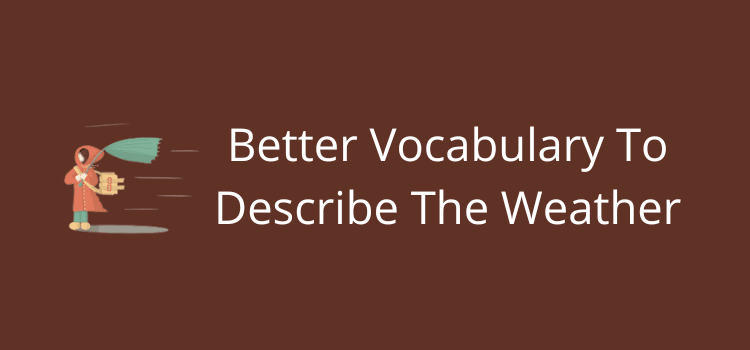
Describe The Weather In Writing With Better Vocabulary
Leave a comment cancel reply.
Your email address will not be published. Required fields are marked *
Save my name, email, and website in this browser for the next time I comment.
To prevent spam, all comments are moderated and will be published upon approval. Submit your comment only once, please.
This site uses Akismet to reduce spam. Learn how your comment data is processed .
Privacy Overview
The Enlightened Mindset
Exploring the World of Knowledge and Understanding
Welcome to the world's first fully AI generated website!
Describing Night Time Creative Writing: Tips and Examples
By Happy Sharer

Introduction
Writing about night time can be a challenge. It’s easy to rely on clichés or overused phrases, but if you want to create something truly special, you need to find a way to evoke emotion and capture the beauty of the night in words. In this article, we’ll explore ways to describe night time creative writing, from using descriptive language to create an image of the night, to painting a picture of a moonlit night through sensory language, to exploring the mystery of the night through dialogue.

Describe the Setting of a Summer Night in Detail
The first step in describing a night scene is to use descriptive language to create an image of the night. Think about the features of a summer night – the temperature, the smells, the sounds – and try to capture them in your writing. You could describe the warmth of the air, the smell of freshly cut grass, or the sound of crickets chirping in the distance. The more detailed and specific you are, the better.

Use Metaphors to Evoke Emotion when Describing the Night Sky
Metaphors are a great way to evoke emotion when describing the night sky. For example, you could say that the stars are “diamonds in the sky” or that the moon is a “lonely sentinel”. These metaphors help to create a mood and make the night sky come alive in the reader’s mind.

Create a Character and Write a Story Set Around Their Experience of the Night
Another way to bring the night alive is to create a character and write a story set around their experience of the night. When creating your character, think about their background, their personality, and their goals. Then, as you write the story, focus on how the character interacts with the night – what do they see, hear, feel? How does the night affect them emotionally? This will help to bring the night alive in your writing.

Paint a Picture of a Moonlit Night Through Sensory Language
Sensory language is another powerful tool for capturing the beauty of the night. Use words that evoke sight, sound, smell, taste, and touch to help readers imagine what it’s like to be in the middle of a moonlit night. You could describe the silver light of the moon, the rustle of leaves in the wind, the sweet scent of jasmine, or the coolness of the night air. All of these details will help to paint a vivid picture of the night.
Explore the Mystery of the Night Through Dialogue
Dialogue is a great way to explore the mystery of the night. You can use conversations between characters to hint at secrets and explore themes such as fear, loneliness, and the unknown. Try to keep the dialogue natural and realistic, so that the reader feels like they’re eavesdropping on a real conversation. This will help to create an atmosphere of suspense and intrigue.
Discuss the Symbolism of Night in Literature
The symbolism of night has been used in literature for centuries. From Shakespeare’s “To be or not to be” soliloquy in Hamlet, to Emily Bronte’s description of the moors in Wuthering Heights, authors have used the darkness of the night to explore themes such as death, loss, and rebirth. By drawing on these literary works, you can add depth and meaning to your own writing.
Write a Poem about the Beauty of the Night
Finally, why not try your hand at writing a poem about the beauty of the night? Writing a poem is a great way to capture the beauty and mystery of the night in a few short lines. Start by thinking of a few words or images that evoke the night, then use those words to create a poetic piece that expresses your feelings about the night. You could also look at examples of existing poems to get some inspiration, such as Robert Frost’s “Stopping by Woods on a Snowy Evening” or William Wordsworth’s “The World Is Too Much With Us”.
Writing about night time can be tricky, but with the right approach, it can also be incredibly rewarding. In this article, we’ve explored ways to describe night time creative writing, from using descriptive language to create an image of the night, to painting a picture of a moonlit night through sensory language, to exploring the mystery of the night through dialogue. We’ve also discussed the symbolism of night in literature and offered tips on how to write a poem about the beauty of the night. With these tips and examples, you should now have the confidence to tackle any creative writing project involving night time.
(Note: Is this article not meeting your expectations? Do you have knowledge or insights to share? Unlock new opportunities and expand your reach by joining our authors team. Click Registration to join us and share your expertise with our readers.)
Hi, I'm Happy Sharer and I love sharing interesting and useful knowledge with others. I have a passion for learning and enjoy explaining complex concepts in a simple way.
Related Post
Unlocking creativity: a guide to making creative content for instagram, embracing the future: the revolutionary impact of digital health innovation, the comprehensive guide to leadership consulting: enhancing organizational performance and growth, leave a reply cancel reply.
Your email address will not be published. Required fields are marked *
Comprehensive Guide to the Latest News on the US Election 2024
Expert guide: removing gel nail polish at home safely, trading crypto in bull and bear markets: a comprehensive examination of the differences, making croatia travel arrangements.

Writing Nestling

How To Describe Night In Writing (For Beginners- 2024)
Table of Contents
How To Describe Night In Writing
How To Describe Night In Writing: In the realm of storytelling, the night is a canvas painted with shades of mystery, romance, and introspection.
Capturing the essence of the nocturnal world through the art of description is a literary endeavor that transcends mere depiction; it is an invitation for readers to immerse themselves in the atmospheric allure of darkness.
Describing night in writing goes beyond the absence of daylight; it delves into the profound symbolism, sensory intricacies, and emotional nuances that unfold when the sun sets.
In this exploration, we embark on a journey to unravel the techniques that transform night into a compelling character, shaping narratives with the subtle strokes of descriptive language, symbolism, and the evolving atmosphere.
Join the nocturnal odyssey as we delve into the artistry of portraying the night in all its enigmatic splendor.
Describing night in writing involves capturing the sensory elements and creating a vivid atmosphere. Here’s a step-by-step process on How To Describe Night In Writing:
Observe the Setting
Start by observing the night setting you want to describe. Note the surroundings, the moon’s phase, stars, and any unique features.
Identify Key Senses
Consider the senses you want to emphasize – sight, sound, smell, touch. Night descriptions often involve darkness, subtle lighting, cool temperatures, and distinct sounds.
Focus on Visuals
Begin with visual details. Describe the moon, its glow, or lack thereof. Note any shadows, silhouettes, or shimmering lights. Paint a picture of the sky , stars, and the overall atmosphere.
Play with Colors
Utilize color imagery to evoke emotions. Describe the night sky as inky black, navy blue, or velvety indigo. Highlight any splashes of color from celestial bodies or artificial lights.
Capture Sounds
Move on to auditory details. Highlight the quietness, distant sounds like rustling leaves or nocturnal creatures, or urban noises. Use onomatopoeic words to enhance the auditory experience.
Incorporate Smells
Explore olfactory elements, if applicable. Mention scents carried by the night breeze, such as earthiness, floral fragrances, or even distant cooking smells.

Describe Temperature
Discuss the temperature of the night. Is it crisp and cool, or muggy and warm? Convey the sensation of the air on the skin to immerse the reader in the setting.
Use Metaphors and Similes
Enrich your description with metaphors and similes. Compare the night to something familiar or use figurative language to evoke a specific mood or feeling.
Consider the Setting’s Influence
Reflect on how the night setting influences the mood or actions of characters, if applicable. A moonlit night might create a romantic atmosphere, while a dark and stormy night might evoke tension.
Craft a Seamless Narrative
Weave these elements into your narrative seamlessly. Avoid overwhelming the reader with too many details at once, and ensure your descriptions serve the overall tone and theme of your writing .
Remember, the key is to engage the reader’s senses and emotions, allowing them to experience the night through your words.

Setting the Scene
As the sun dipped below the horizon, the world underwent a transformative dance, shrouding itself in the mystique of the night.
The landscape, once awash in the golden hues of daylight, succumbed to the velvet embrace of darkness. The moon, a silent maestro, cast its silvery glow upon the earth, conjuring a dreamscape where reality and imagination intertwined.
Shadows, like enigmatic dancers, pirouetted across the canvas of the night, tracing the contours of hidden secrets.
The air, now a symphony of nocturnal whispers, held the promise of undiscovered tales waiting to unfold. In this nocturnal theater, time itself seemed to stretch and contract, creating a liminal space where the extraordinary became plausible, and the ordinary, extraordinary.
Establishing the time and place
As the clock’s hands embraced the midnight hour, the world hushed into a stillness reserved exclusively for the nocturnal.
The setting, a quaint hamlet nestled between ancient hills and sleepy meadows, wore the moonlight like a silken cloak.
The air, crisp and cool, bore the distinctive fragrance of dew-kissed grass. The village, steeped in a timeless charm, echoed with the distant murmurings of a nearby stream.
The rhythmic cadence of crickets underscored the unfolding night, orchestrating the passage of time with their unseen serenade.
This was not just a specific moment; it was a temporal crossroads where the magic of night met the tangible reality of a place suspended in its own enchantment.
Sensory Imagery
As the inky night unfurled its obsidian wings, the world transformed into a sensory symphony, weaving a tapestry of sensations that transcended the mundane.
Moonbeams, like liquid silver, painted a celestial mural overhead, casting a spell that danced upon the eyes. The night air, cool and velvety, carried with it the whispers of secrets, an olfactory sonnet that blended the earthy perfume of soil with the ethereal fragrance of blooming night flowers.
Each step on the nocturnal path was a tactile exploration, the ground yielding with a gentle sigh as if sharing the stories it cradled.
The orchestration of nocturnal creatures, from the haunting calls of distant owls to the rustle of unseen critters, resonated through the bones, a harmonic convergence of nature’s nocturnal opera.
In this symphony of the senses, the night unfolded not just as an absence of light but as a rich, multi-dimensional experience where every perception became a brushstroke in the masterpiece of the moonlit hours.
Visual Descriptions
Under the night’s cosmic theatre, visual poetry unfolded with the grace of a celestial ballet. The moon, a luminescent guardian, painted the world in silver strokes, casting enchanting shadows that waltzed with the slightest breeze.
Stars, like diamonds strewn across a velvet canvas, sparkled with ethereal brilliance, their patterns telling ancient tales written in constellations.
Wisps of clouds, veiled in obsidian mystery, traversed the heavens like spectral dancers in an ever-changing choreography.
The landscape below, bathed in the soft glow of lunar radiance, revealed hidden details – the glistening dew on blades of grass, the reflective eyes of nocturnal creatures, and the stoic silhouettes of towering trees.
In the quietude of the night, the visual tapestry unfolded, inviting the observer to lose themselves in the mesmerizing spectacle of shadows and silvery luminescence, where reality and dreams coalesced in a nocturnal embrace.
Emotional Atmosphere
In the tender cradle of night, emotions swirled like phantom dancers, casting their spell on the tapestry of darkness.
The moon, a silent confidante, witnessed the kaleidoscope of feelings that emerged beneath its gentle gaze. The night, a canvas for the soul’s expression, wore the cloak of mystery with grace.
It was not merely the absence of daylight; it was a sanctuary for introspection, a refuge for the introspective minds to delve into the depths of their own emotions.
Loneliness, tinged with the sweet melancholy of solitude, coexisted with the thrill of nocturnal secrets waiting to be unraveled.
Serenity intertwined with a quiet chaos, and the night became an emotional alchemy, where each heartbeat echoed against the velvet sky, composing a nocturne of emotions that spoke to the very core of the human experience.

Creating a mood through word choice and tone
In the realm of night, the power of language becomes a magicians’ wand, conjuring moods that dance on the precipice of enchantment.
Words, carefully selected, cast a spell that transcends mere description, immersing the reader in the emotive chiaroscuro of the nocturnal canvas.
The tone, a maestro orchestrating the symphony of emotions, guides the reader through the moonlit corridors of anticipation, weaving a tapestry where each adjective is a brushstroke, and every sentence a musical note.
The night, draped in an opulent lexicon, can be a sultry seductress or a solemn sage, depending on the alchemy of word choice and tone.
It is the subtle interplay of consonants and vowels that transforms the mundane into the extraordinary, painting the atmosphere with hues of mystery, serenity, or palpable tension.
As the words unfurl like tendrils of mist in the midnight air, they invite the reader to not just witness the night but to feel its pulse, creating an immersive experience where language becomes a vessel for the soul of the nocturnal.
Symbolism and Metaphor
In the nocturnal tapestry, the interplay of symbols and metaphors is a celestial ballet, where the ordinary becomes a constellation of hidden meanings.
The moon, a metaphorical lantern in the cosmic dark, doesn’t merely illuminate; it becomes a silent confidante, casting shadows that dance like metaphorical whispers of ancient tales.
Stars, those celestial hieroglyphs, inscribe a narrative on the vast scroll of the night sky, each one a metaphorical punctuation mark in the poetry of existence.
The night itself, a canvas for dreams, is a metaphorical cocoon where reality transforms into the ephemeral butterfly of imagination.
In this nocturnal sanctuary, every rustle of leaves and every gust of wind is laden with symbolic resonance, turning the act of perception into an intricate dance with the metaphysical.
The symbols and metaphors, like cosmic breadcrumbs, invite the reader to embark on a journey through the labyrinth of meaning, where the night becomes a canvas for the reader’s own introspective exploration.
Using night as a symbolic element
The night, a ubiquitous yet enigmatic character in the narrative of existence, dons the cloak of symbolism, transcending its physical realm to become a metaphorical maestro orchestrating the symphony of deeper meanings.
It is the cosmic chalice of mysteries, where darkness isn’t merely the absence of light but a metaphor for the uncharted territories of the human psyche.
The nocturnal hours become a symbolic canvas, painting the complexities of life, where shadows aren’t just absence but embodiments of hidden truths.
The moon, a luminary sentinel in the night, becomes a symbol of cyclical renewal and eternal rhythms. The stars, like distant dreams, twinkle as symbolic aspirations in the vast tapestry of the universe.
Night, as a symbolic element, beckons the reader to delve beyond the surface, inviting contemplation on the dualities of life, the veiled beauty in obscurity, and the profound symbolism that weaves through the celestial fabric of existence.
Character Interaction with the Night
Beneath the cosmic theater of the night, characters don’t merely exist; they are alchemists, concocting elixirs of emotion in the moonlit crucible.
Each step is a dance with shadows, and every heartbeat resonates with the nocturnal symphony. The night is not a backdrop but a silent confidante, witnessing the whispered secrets and unspoken fears that characters dare not reveal in the harsh light of day.
Whether it’s the protagonist seeking solace in the velvet embrace of darkness or the antagonist cloaked in the ambiguity of shadows, the night becomes an intimate accomplice to their innermost struggles.
The stars are not just celestial bystanders; they are the audience to the characters’ silent soliloquies, while the moon, a cosmic mirror, reflects the myriad emotions etched across their faces.
In the nocturnal ballet, characters don’t navigate the night; they immerse themselves in its depths, each interaction a delicate choreography that leaves an indelible mark on the canvas of their existence.
Integrating characters into the nighttime setting
As the sun’s radiance retreated, characters became interwoven threads in the intricate fabric of the nocturnal tapestry.
Their silhouettes, framed against the indigo backdrop, carried the weight of both secrets and vulnerabilities. Nighttime was not just a setting; it was a companion to their solitude, a confidant to their whispered hopes and fears.
Each footfall on the dew-kissed ground echoed the cadence of their journey, and every stolen glance beneath the moonlight held the promise of clandestine revelations.
The characters weren’t mere spectators to the night; they were active participants, navigating the shadows with a nuanced dance of emotions.
Whether driven by the pursuit of elusive dreams or haunted by the specters of the past, the night embraced them in its inky bosom, revealing facets of their personalities that daylight dared not expose.
In this symbiotic relationship between characters and the nighttime setting, the narrative unfolded as a nocturnal odyssey, where the darkness became both a sanctuary and a crucible, shaping the characters in its mysterious forge.

Narrative Techniques
In the nocturnal realm where stories unfold like constellations in the cosmic tapestry, narrative techniques are the alchemical spells that transform mere words into ethereal experiences.
The prose, a celestial navigator, charts a course through the vast sea of night, employing metaphors as North Stars and similes as guiding constellations.
Pacing, like a heartbeat echoing through the narrative, quickens in suspenseful crescendos and mellows in contemplative interludes, orchestrating a symphony of emotions.
Sentence structures are not mere grammatical constructs; they are architectural marvels, crafting moonlit archways through which readers traverse the labyrinth of the plot.
Flashbacks become time-traveling portals, allowing characters to dance between the past and present in a waltz of memory.
In this literary cosmos, the interplay of narrative techniques is not just a means of storytelling; it is the very essence of the night, where the language becomes a celestial chariot propelling readers into the uncharted realms of imagination.
Employing descriptive language and literary devices
In the realm of night, descriptive language and literary devices unfurl like the tendrils of ivy, embracing the reader in a tapestry of vivid imagery and emotive resonance.
Words aren’t mere vessels of meaning; they are alchemical agents that transmute the mundane into the magical. Metaphors, like fireflies, dance in the velvety prose, casting a soft glow on the intricacies of the night.
Similes are celestial bridges connecting the familiar to the fantastical, while personification breathes life into the silent whispers of the nocturnal breeze.
Descriptive language, akin to a painter’s brush, strokes the canvas of the narrative with hues of emotion, detailing the contours of moonlit landscapes and the ephemeral beauty of night creatures.
Each adjective is a palette choice, each adverb a nuanced brushstroke, and every literary device a finely tuned instrument in the symphony of storytelling.
In this celestial dance of language, the night becomes not just a setting but an immersive experience, where the reader doesn’t observe but tangibly feels the magic woven into the very fabric of the prose.
Evolving Atmosphere
As the night unfolded its wings, the atmosphere morphed into a living entity, a chameleon that embraced metamorphosis with each passing moment. Moonlight, initially a shy whisper, transformed into a luminous ballad, its glow waxing and waning in a celestial rhythm.
Stars, like shy spectators, blinked in and out, altering the cosmic audience’s intensity. The air, once a still canvas, began to shiver with the nocturnal secrets it harbored, as if the very breath of the night held tales waiting to exhale.
Clouds, nomadic wanderers in the sky’s expanse, choreographed a dance that veiled and unveiled the moon’s luminous countenance.
The evolving atmosphere wasn’t just a backdrop; it was a character in its own right, an unseen force sculpting the narrative with the subtle touch of a cosmic artisan.
In the ever-shifting nocturnal tableau, the atmosphere became a silent storyteller, etching its own verses into the fabric of the night.
Describing the progression of the night
As the night unfolded its mysterious manuscript, it embarked on a poetic journey of progression, a narrative written in the ink of shadows and stardust.
The twilight’s last sigh marked the inception, a transitional phase where the sky, a canvas in transition, surrendered its vibrant hues to the encroaching darkness.
The initial hush of nocturnal awakening resonated through the air, a prelude to the symphony of crickets and night creatures tuning their instruments.
With the ascent of the moon, the narrative gained momentum, casting a silver glow on the evolving landscape.
Stars, like punctuation marks, appeared one by one, illuminating the cosmic syntax of the night. The zenith of the night unveiled a panorama of celestial wonders, each passing hour etching its own stanza in the celestial sonnet.
The descent toward dawn became a gradual unveiling, a reverse metamorphosis where shadows relinquished their hold, and the world emerged from the cocoon of darkness into the tentative embrace of a new day.
In this chronological dance, the progression of the night became a temporal tapestry, weaving the reader through the ebb and flow of nocturnal wonders.
Frequently Asked Questions about How To Describe Night In Writing
What elements should i focus on when describing night in writing.
When describing night, pay attention to visual details such as the moon, stars, and shadows. Explore auditory elements like sounds in the night, consider the temperature, and incorporate sensory experiences like smells and touch.
How can I effectively convey the visual aspects of the night in my writing?
Use vivid imagery to depict the night sky, emphasizing the moon’s glow, star patterns, and the overall atmosphere. Experiment with colors like inky black, navy blue, or velvety indigo to evoke the mood of the night.
What role do sounds play in creating a night scene?
Sounds are crucial in conveying the ambiance of the night. Describe quietness, distant rustles, nocturnal creature noises, or urban sounds. Consider using onomatopoeic words to enhance the auditory experience.
Should I include smells when describing a night setting?
Including smells can add depth to your description. Consider scents carried by the night breeze, such as earthiness, floral fragrances, or distant cooking smells, to enhance the reader’s sensory experience.
How do I capture the temperature of the night in my writing?
Describe the temperature by conveying whether the night is crisp and cool, muggy and warm, or somewhere in between. Discuss the sensation of the air on the skin to immerse the reader in the setting.
Can I use metaphors and similes to enhance my description of the night?
Absolutely! Metaphors and similes can enrich your writing. Compare the night to something familiar or use figurative language to evoke specific moods or feelings associated with the night.
How do I avoid overwhelming the reader with night descriptions?
Craft a seamless narrative by introducing details gradually. Ensure your descriptions serve the overall tone and theme of your writing, and avoid overcrowding your prose with too many details at once.
How can I make the night setting influence the overall mood of my writing?
Reflect on how the night setting influences the characters or the atmosphere. For instance, a moonlit night might create a romantic ambiance, while a dark and stormy night could evoke tension or suspense in your narrative.
In conclusion of How To Describe Night In Writing , describing night in writing is an art that engages the reader’s senses and emotions to create a vivid and immersive experience.
By focusing on visual elements such as the moon and stars, incorporating auditory details like distant sounds, exploring smells carried by the night breeze, and conveying the temperature, writers can paint a rich and atmospheric picture of the night.
Utilizing metaphors, similes, and careful narrative crafting allows for a seamless integration of these elements, enhancing the overall mood of the writing.
Remember, the beauty of describing night lies in the delicate balance of details that transport the reader into the enchanting realm of darkness, making it a compelling and memorable aspect of any narrative.
Related Posts:
- How To Describe Moon In Creative Writing (10 Best…
- How To Describe Stars In Writing Poetically (10 Best Tips)
- How to Describe a Magical Forest (10 Effective Tips)
- How To Describe A Sunset In Writing (Words, Phrases…
- How To Write A Prologue For A Romance Novel (10 Best Tips)
- How To Describe A Dress In Writing (10 Best Tips)
Similar Posts

How To Describe Autumn Season In Writing (11 Steps, Quotes & Words)
How To Describe Autumn Season In Writing How To Describe Autumn Season In Writing: Welcome to the art of capturing the vivid essence of autumn with the stroke of your pen and the magic of your words. The autumn season, with its rich tapestry of colors, crisp air, and the subtle symphony of falling leaves,…

How To Describe A Face In Writing (10 Best Tips)
How To Describe A Face In Writing How To Describe A Face In Writing: The art of describing faces in writing is a powerful and essential aspect of storytelling that transcends mere words on a page. In the hands of a skilled writer, facial descriptions have the ability to breathe life into characters, evoke emotions,…

Explanatory Writing [Tips, Templates, & Ultimate Guide-2024]
Explanatory Writing: Tips, Templates, & Ultimate Guide Review of Explanatory Writing Explanatory Writing is an important skill that allows writers to convey their ideas concisely and accurately. Learning to write effectively is important for everyday communication as well as for use in professional and academic contexts. Providing information on the objectives and methods of explanatory…

How to Describe Confusion in a Story (10 Best Tips)
In the intricate tapestry of storytelling, emotions serve as the vibrant threads that weave together the fabric of narrative. Among these, confusion stands as a particularly compelling and complex motif, offering authors a rich palette with which to evoke intrigue, tension, and empathy within their readers. Describing confusion in a story is akin to capturing…

How To End A Query Letter? (Samples & Examples)
How To End A Query Letter? How To End A Query Letter? Crafting the conclusion of a query letter is not merely a matter of closing remarks; it’s the final flourish that can leave a lasting impression on the recipient. Like the concluding chapter of a captivating story, the ending of your query letter is…

How To Describe Betrayal In Writing (15 Best Tips-2024)
How To Describe Betrayal In Writing How To Describe Betrayal In Writing: Describing betrayal in writing is an art that goes beyond mere storytelling; it’s a journey into the depths of human emotions and the intricate labyrinth of trust and deceit. Betrayal is a universal theme that resonates with readers because it reflects the complexities…

20+ of the Best Words to Describe Night in a Story
By: Author Hiuyan Lam
Posted on Last updated: October 20, 2023
Categories Vocabulary Boosters

Evoking the atmosphere of the setting in your story, especially at night, requires the use of descriptive words so you can bring your readers to another world.
Use the following words to describe night to help you write an exciting story.
Words to describe night in a metropolitan city
There is always a beehive of activity in cities at daytime and nighttime. Use the following words to describe the night in a city that never sleeps.
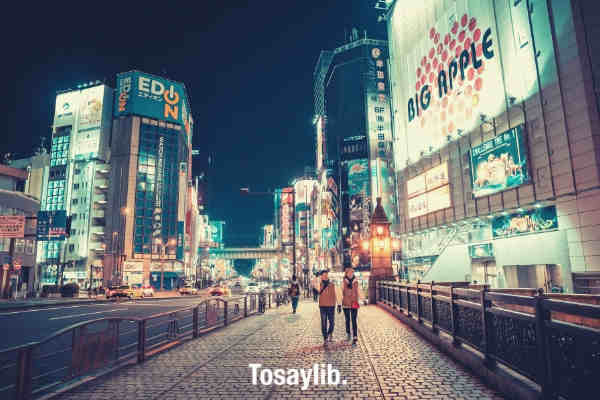
You May Also Like:
25 of the Best Words and Phrases to Describe Rain

Words to describe night in the countryside, farm, or mountain
The countryside, farm, and mountains have different nights. Use these words to describe the smell and serenity of the nights.
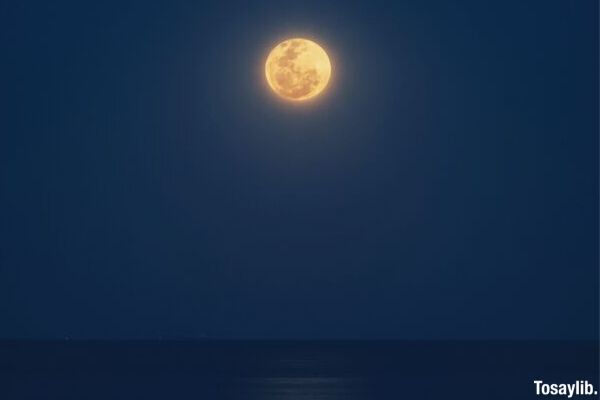
30 of the Best Words to Describe Smell in Your Writing
Words to describe night for when you are lonely
The following examples of words help you explain how you felt when someone or something was absent, making you have a lonely night.

For midnight
A few hours after sunset, midnight strikes. You may describe the night at this time using the following words.
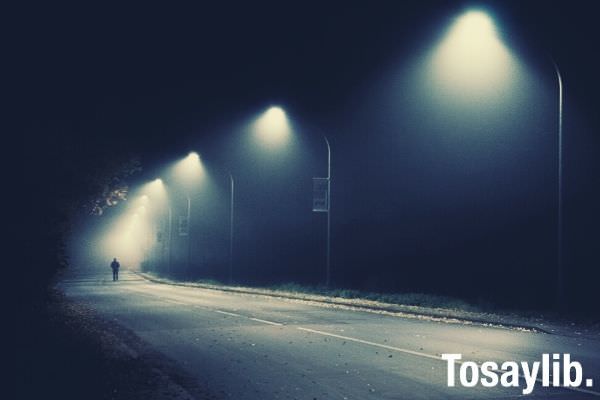
8 Great Examples of a Business Meeting Request Email
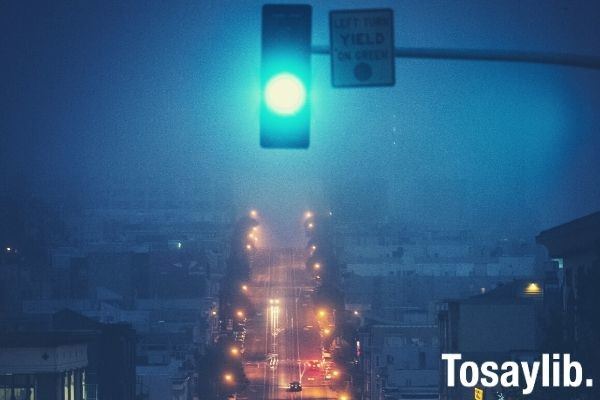
Words to describe night in a city during a lockdown
Life during lockdowns is less active, especially at night. You may use the following words to describe how they were for you.
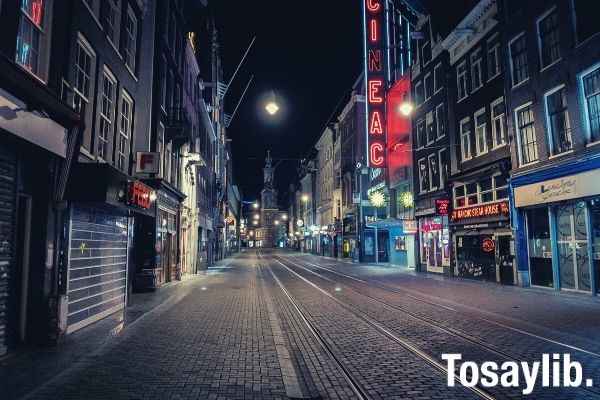
Writing a captivating story requires you to go out of your way and enhance it using the best descriptive words. They come in varieties based on the type of storyline. Use the above examples of words to describe the night to make your readers love and engage in your story.
- Skip to main content
- Skip to primary sidebar

Writing Tips Oasis - A website dedicated to helping writers to write and publish books.
10 Words to Describe the Moon and Stars
By Rebecca Parpworth-Reynolds

If you’re planning on having an outdoor night setting in your novel and need some help in revealing it, below are 10 words to describe the moon and the stars.
Bright and shining.
“The night sky was aglow with a canopy of glittering stars.”
“The moon was aglow with a pure, white light which gave the travelers reassurance on their journey.”
How it Adds Description
In the right kind of clear sky, the moon and stars can really shine bright! Sometimes it’s possible to even pick up on different colors. If the moon and stars are really visible in your night sky in your story, consider describing them as being “aglow”!
Relating to the stars or space.
“Ever since she was a little girl she had been fascinated by the astral phenomena she could spot through her toy telescope. It was little wonder that one day she wished to be among the stars, too.”
“It was clear that this ancient civilization put their faith in the moon and the stars to guide them. Everywhere the explorers looked, they could see intricate astral designs carved into the stone.”
“Astral” is a great way to describe the stars and other things in outer space. The word has a sense of power and mystery to it, perfect for those truly amazing nighttime scenes or for those characters that find wonder in the stars.
3. Celestial
From the sky or outside of the Earth.
“Travelers have always relied upon celestial bodies such as the moon and stars to guide their way.”
“The night sky was lit with a celestial glow, as the moon spread its ghostly light through the thin cloud cover above.”
When it comes to describing things in the night sky, “celestial” is a top choice! It implies a sense of being outside of human reach, which can make the moon and stars mysterious, and to some characters, all the more alluring!
4. Ethereal
Light and delicate, in a way that appears otherworldly.
“The moon cast an ethereal glow across the sky, making the night seem even more sinister.”
“Many people are drawn to the ethereal nature of the stars, using them to divine various aspects of their lives.”
Thanks to the bright white of the moon and stars, they often seem quite ghostly, as if they are not real. “Ethereal” also highlights how delicate the things in the night sky can look, the stars like tiny jewels and the moon like a pale piece of silk.
5. Luminous
- Emitting or reflecting bright light , especially in the darkness.
- Very beautiful.
“The luminous glow of the moon cut through the darkness. Although it did not provide them with much light, it was a welcome alternative to the pitch black of the cave.”
“The stars shone like luminous jewels. Among them, she could make out the arcing row of Orion’s Belt, as well as the proud glow of Sirius, the dog star.”
The moon and stars can often be bright lights in the dark night sky, helping to light up the gloom. A great way to describe them is “luminous”, which not only captures their beauty but also illustrates the way in which the moon reflects the light of the sun!
Peaceful and calm.
“The serene glow of the moon always made her feel at ease. Whenever she could not sleep, she could always be found staring up at it from her window.”
“After the tumultuous storms they had experienced during the daytime, the serene moon and stars served as welcome guests for the sailors.”
Often, people find the moon and the stars, especially the moon, to be particularly calming. If the moon has this effect on the characters in your story, try describing it as “serene”!
7. Shimmering
Reflecting a gentle light that appears to move and shift slightly.
“In the clear night sky above them, the stars were shimmering like the jewels in her new engagement ring.”
“The shimmering reflection of the moon on the lake’s surface was gently disturbed by the wake of the small rowboat.”
In the gloom of the night sky, it is easy to see the light move and shift around the moon and the stars, either from cloud cover, or changing light levels below. This gives them the appearance that they are “shimmering”, making it easy for characters to be mystified by them, and to equate them to precious gems and jewels.
Appearing to be silver in color and appearance.
“She stared at the moon’s silvery visage shining in through the window as she prepared herself for what lay ahead.”
“The stars silvery glow reminded him of the large coin purse he was sure to receive once he finished the job, as he imagined what he would spend each astral coin on.”
“Silvery” not only helps you to explain the color of the moon and stars and how they may shine like precious metal, but it also has extra connotations too, of finery, and of course, money and wealth. Perhaps the moon and stars might complement a character’s piece of jewelry, or, remind them that sometimes what is truly priceless is something that we see every night.
9. Spectral
Ghostly , appearing like a spirit.
“The moon cast its spectral glow across the abandoned graveyard as if trying to gently awaken the dead from their slumber.”
“The stars flickered like the flames of spectral candles “
Often, moonlight is linked to ghosts and the supernatural, especially in Gothic or Horror literature. If you need to create a spooky atmosphere in your story, try describing that eerie white glow as “spectral”!
10. Tranquil
Calm, quiet, and peaceful .
“The tranquil light of the moon washed over the meadow.”
“There is nothing more tranquil than laying out under the stars on a clear night like this.”
The moon and stars are often referred to as being peaceful or bringing people calm. A great way to show this in your writing is to describe them as “tranquil.” If you need any other incentive to choose this word, the moon even has a Sea of Tranquility!
Search for creative inspiration
20,101 quotes, descriptions and writing prompts, 4,968 themes
nighttime - quotes and descriptions to inspire creative writing
- A cold night
- cloudy night
- sacred night
- Starry Night
Nighttime hugs as the infinite black thread of heaven's silken keep.
Blackest nighttime hugs the land as if it were the bedtime story of creation's dreams.
Nighttime brings kisses of starlight upon a black basilica sky.
Nighttime comes as protective black, made ever more enchanting by the starlight.
Nighttime graces the sky once more with its ambient deep hues.
Nighttime comes to bathe the moon in her comforting black.
Nighttime comes as the guardian of the daylight, giving her time to rest and sleep under the stars.
Blackest nighttime comes as hymn to the peaceful starlit scene.
Sign in or sign up for Descriptionar i
Sign up for descriptionar i, recover your descriptionar i password.
Keep track of your favorite writers on Descriptionari
We won't spam your account. Set your permissions during sign up or at any time afterward.

IMAGES
COMMENTS
When used effectively, these descriptive words for the night can transform your writing, painting a vibrant picture of the night and drawing readers further into your story. 30 Best Words to Describe Night in Writing. When it comes to describing night scenes in writing, the choice of words plays a crucial role in painting a vivid picture.
Descriptionari has thousands of original creative story ideas from new authors and amazing quotes to boost your creativity. Kick writer's block to the curb and write that story! Descriptionari is a place where students, educators and professional writers discover and share inspirational writing and amazing descriptions
Writing about a night using it was or there was is a common writing weakness. We so often refer to a night as it, like the weather. A better way is to think about imagery and sensory details. For example, the gentle rustling of leaves in the night breeze or the distant glow of city lights use nouns to start the description.
Descriptionari has thousands of original creative story ideas from new authors and amazing quotes to boost your creativity. Kick writer's block to the curb and write that story! Descriptionari is a place where students, educators and professional writers discover and share inspirational writing and amazing descriptions
Creative writing at night can be tricky to get right. This article provides tips and examples on how to use descriptive language, metaphors, sensory language, dialogue, symbolism, and poetry to capture the beauty of the night.
How To Describe Night In Writing. How To Describe Night In Writing: In the realm of storytelling, the night is a canvas painted with shades of mystery, romance, and introspection. Capturing the essence of the nocturnal world through the art of description is a literary endeavor that transcends mere depiction; it is an invitation for readers to immerse themselves in the atmospheric allure of ...
"A small group of them had decided to go out and experience such an engaging night together." How it Adds Description. If the night is capturing and holding a character's attention tightly, then consider describing the night as engaging. This will also help to show your readers how invested in this night a character in your story is. 6. Busy
Writing a captivating story requires you to go out of your way and enhance it using the best descriptive words. They come in varieties based on the type of storyline. Use the above examples of words to describe the night to make your readers love and engage in your story.
"The night sky was aglow with a canopy of glittering stars." "The moon was aglow with a pure, white light which gave the travelers reassurance on their journey." How it Adds Description. In the right kind of clear sky, the moon and stars can really shine bright! Sometimes it's possible to even pick up on different colors.
Descriptionari has thousands of original creative story ideas from new authors and amazing quotes to boost your creativity. Kick writer's block to the curb and write that story! Descriptionari is a place where students, educators and professional writers discover and share inspirational writing and amazing descriptions